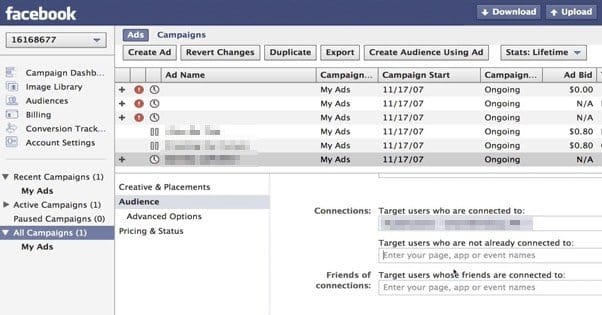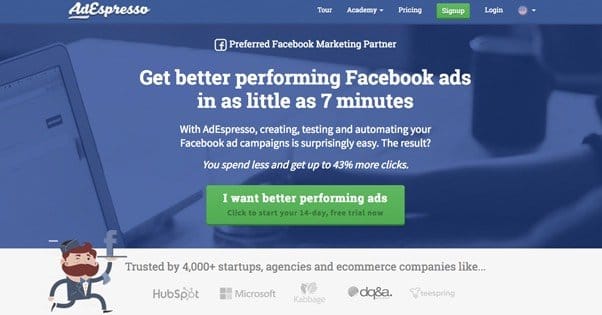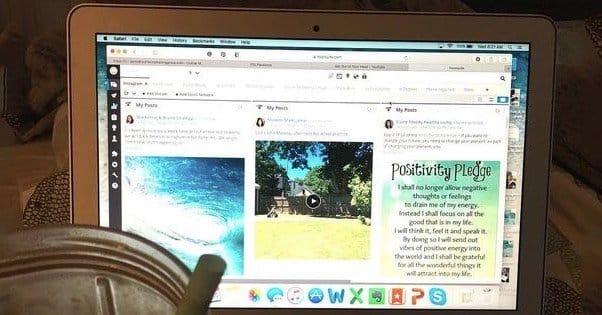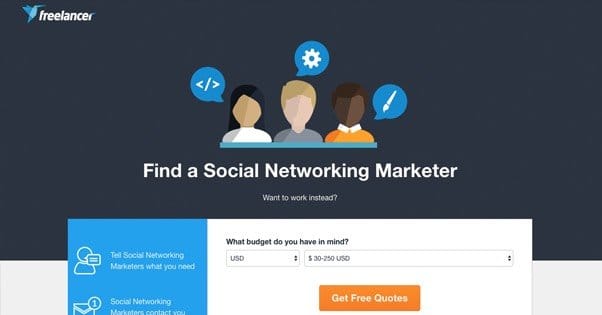 Written by ContentPowered.com
Written by ContentPowered.com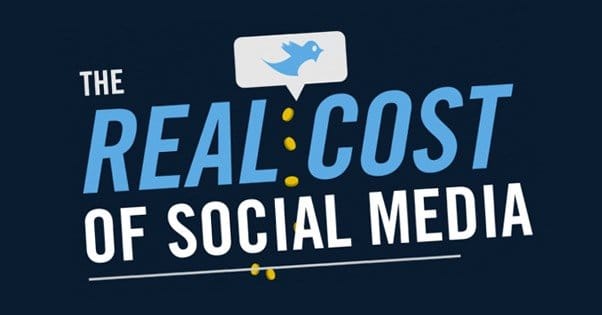
Many people think of social media marketing as a sort of free source of marketing, to compliment paid marketing through Google and the various PPC networks, and organic SEO, which can be as free or as costly as you want to make it.
It’s true that social media can be free. The sites are free to register on and free to operate on, even as a business. You don’t have to pay for an account or for your posts. However, there are a lot of paid features that make your life easier or are, frankly, indispensible.
I’m talking about more than just ads on Facebook and Twitter, too. I’ll cover those for sure, but you can also expect costs in other areas, like analytics outside of what those sites provide, or dashboards to manage everything in one centralized location.
Normally, I would give you a number up front, or even a range of numbers, but social media marketing is so widely varied that I can’t. You can go at it with free tools and your time, and your costs will be nothing more than what you spend on advertising. You can dig into premium tools and pay more to save the time and revel in the convenience. You can go all-out to save yourself time and simply outsource the whole thing. All of these options have price ranges of their own, so no one number will fit everyone.
What I’m going to do is cover each category of marketing and related costs. You can read each section and determine where you fall in the needs, desires, and requirements and what they might cost you. From there, you can estimate the sort of costs you’ll be looking at.
The Cost of Advertising
If you’re doing nothing at all on social media besides basic marketing, the first area you’re likely to explore is advertising. Paying Facebook, Twitter, and other sites for their ads will seem like a steep cost, but it’s really one of the easiest costs to manage. Ads have immediate, visible returns, a million possible optimizations, and relatively low costs compared to many of the other expenses associated with online marketing.
The first thing I’m going to discuss is Facebook, because the majority of the marketers I know are going to be using Facebook before they use any other site. I’ll start off by mentioning Power Editor, Facebook’s advanced tool for ad management. It has a lot of features you’d otherwise only find from premium tools and it’s free, to get to learn it and love it.
The actual cost of ads on Facebook will vary depending on a lot of different factors. Accurate targeting, broad reach, ad objective, relevance score; these all can bring costs up or down. Additionally, the cost of a given objective will vary from industry to industry. We wrote about varying costs here. You can see some detailed breakdowns via AdEspresso as well.
Ads on Facebook can run anywhere from 10 cents per click to $10 per conversion. Figure out roughly the size of your audience, your average conversion rates, and the amount you can budget for them, and that’s about where your costs will land. Or, if the math is too much, just play around in the ads manager and experiment. Some low-budget ads can give you real statistics for your audience.
Twitter ads, similarly, vary according to a ton of different factors. You can generally expect anywhere between 30 cents and $3 per engagement, though outliers do happen. Other social networks are likely to be a little cheaper due to smaller audiences and fewer advertisers, but you then have to accept the smaller audiences.
One thing to note here is that if you choose to hire a social media ads manager to run your ads for you, you can expect to be paying them a percentage of your total ad spend, possibly with a fee up front as well. This is how they scale their prices according to business size.
It’s also worth mentioning that your ad costs are never going to be more than you’re willing to spend. One fundamental part of the PPC advertising on social media is that you can set a maximum budget. If your ad spend reaches that point, your ads are cut off. This way, you can start small and scale up, as your profits from the ads are reinvested into more ads.
Paying for Premium Tools and Analytics
You don’t need to use any external tools or analytics to succeed with social marketing. However, you very much can use a variety of different tools to get you assistance along the way.
On Facebook, Power Editor is a good free option, and the Facebook Insights panel is going to give you a lot of information. It’s perhaps one of the social networks least in need of external aid, but there are certainly options you can use. Other sites, like Twitter, will have more possible tools and more possible expenses. What I’ve done for this section is pulled some of the tools you could use and listed their prices.
AdEspresso: This tool is an all-around Facebook ad creation and optimization engine. It helps your costs for the previous section go down, and your profits go up, but it costs money in return. The base version is $49 per month and works up to a $3K ad spend. The higher your ad spend, the more this costs.
HootSuite: This is a dashboard for keeping all of your social media presence in one place. They have a limited free version that works for up to three social profiles, and then they have scaling premium plans. The professional plan is the cheapest at $10 per month, which gets you up to 10 social profiles, content suggestions, a contest app, and more.
Twitonomy: Facebook Insights may be very robust, but Twitters are not. Twitonomy is a very good analytics app that gives you quite a bit of useful information for free. The premium version comes with more messaging, analytics, and dashboard features, and will cost you $200 per year.
Buffer: Another social manager that includes content creation, curation, timing, and tracking features. Their free version works for Twitter, Facebook, LinkedIn, Google+, and Instagram, but only one account per platform. The $10 plan gives you 10 per platform and adds Pinterest. More accounts – and higher limits on scheduling posts, team members, and analytics – cost $99 and up.
Canva: A content creator app designed to work for social media using dozens of templates to get the size and formatting perfect. Pricing varies, since rather than paying for an account, you pay to rent assets you use as you use them.
There are thousands of other tools out there, and you can see how the costs can add up. $10 a month might not seem like much, but when you get six or seven different tools ranging from $10 to $50 per month, you’re looking at a hefty annual bill.
Purchasing Content for Publication on Social Media
Content for social media doesn’t just mean your posts, though that’s a big part of it. You also have to consider images. Are you taking or creating images yourself? Are you buying them from stock photo sites? Are you paying photographers and digital artists to create them directly?
Content can be purchased as well, of course. I’ve seen people hire writers from sites like Textbroker to write 100-word social media posts for $2 each. Images vary; they can be free, they can cost under $1 from a tool like Canva, they can cost more. Content as a whole can be free if you’re making it yourself, or it can be as expensive as you want to make it through pouring in resources.
Hiring Dedicated Social Media Employees
Hiring a social media worker for your own company can be a wide range of costs as well, though you probably expected that. I would begin by saying you should probably pay them about as much as you pay any other entry-level worker, unless they’re coming with a lot of experience, in which case they probably have their own rates. I would highly recommend against the stereotypical “make the intern do it” since social media is more than just a token presence you should have online. It’s a key component of digital marketing in the modern world.
We wrote a post about hiring a Facebook PPC manager here. I recommend you give it a read. The advice in it will apply to hiring anyone for social media work, regardless of whether they’re focused on the PPC side or the organic posting side.
The fact is, when you’re hiring a social media manager for your company, you’re hiring someone with a dedicated skill set. You want them to be good at their job, and that means being able to write social copy, being able to interpret the results seen in analytics, being able to work with ads in a way that brings profit to your business, and to do it all without going over your budget. You’re trusting them with money, if you’re allowing them to run your PPC, and you’re trusting them with your brand reputation. These aren’t the kind of people who are going to be happy with $7 an hour.
Outsourcing Social Media Partially or Entirely
Outsourcing can work much like hiring an employee, except you have a different set of concerns. You don’t need to worry about their health insurance, for example, or other company benefits. You don’t need to worry about paying for software licenses, computer hardware, or space in your office. You don’t need to worry about how they fit in with your company culture.
On the other hand, they’re a contract-based worker. That means you need to have a contract with sufficient protections and outs for both sides. You need to be concerned with their skills and the tools they use to do their job, but you don’t have the position necessary to change them if you don’t like what you see. It’s sort of an on-or-off relationship; the only real recourse you have, once words fail in negotiations, is to cut the contract and walk away. This leaves you in a lurch, trying to figure out how to keep your social media presence active without slipping.
Decent social media consultants can cost between $40 and $50 per hours. At $45 per hour, if your freelancer works a mere five hours per week on your company – one hour per weekday – that’s still $900 per month. That’s not an insignificant amount of money. And here’s the thing; $45 an hour is on the low end of the spectrum. Many high-tier social media consultants work for or own their own companies, and may charge flat rates much higher than that. They also, as mentioned above, might charge a percentage of the ad spend you have them manage with your social ads.
Freelancers do have the additional drawback of a complete lack of loyalty. The only thing keeping them working with your company is the money. If you or your employees are abusive or ask more than they think your payment deserves, they can and will absolutely cut and run. It’s well within their contract to do so, after all.
With larger companies, or when you have a dedicated social media presence on more than one or two sites, you may end up needing to hire a marketing company to do the work for you. They’ll have all the benefits of working with a freelancer, but they are more beholden to their contracts because their reputations are on the line as well. You may get some oversight into how they work with your social profiles, and you’ll likely get some blow-by-blow reports on how your efforts are panning out. On the other hand, you may be locked into a contract, and they will certainly be expensive – between $15,000 and $30,000 per year, depending on the company.
As you can probably guess, the DIY approach is always going to be the cheapest, but you have to learn yourself, you have to spend time to do the work, and you’re probably going to make mistakes along the way. From there, cost simply rises the more you need done, the more people need to do it, and the more assets you need to buy to get it done.
